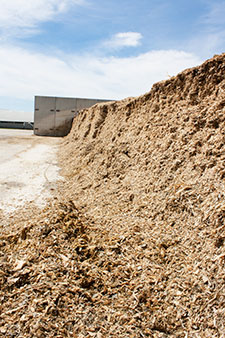 When it comes to feed, shrink – or nutrients that are lost before they have a chance to be consumed – can have a substantial impact on a dairy's bottom line. Any number of factors, from operator error to natural causes, can be to blame.
When it comes to feed, shrink – or nutrients that are lost before they have a chance to be consumed – can have a substantial impact on a dairy's bottom line. Any number of factors, from operator error to natural causes, can be to blame. Nutrients can also flow away from feed storage areas with or without the aid of precipitation. When the crop is harvested at a high moisture level, silage leachate can flow from the silage pile without a precipitation event. Meanwhile, runoff – the more common way that nutrients leave the feed storage area – generally coincides with a rain or snowmelt event.
In the UW-Discovery Farms Newsletter, research specialist Aaron Wunderlin compared feed storage losses to field loss data and discussed what producers could do to reduce their risk.
Sixty percent of precipitation events cause runoff from feed storage areas compared to nine percent on farm fields.
Feed storage areas run off more often than farm fields and it takes less precipitation to cause runoff. It only takes 0.01 inch of precipitation to produce runoff from a feed storage area. This is 10 times less than the minimum rainfall required to produce runoff from fields.
One acre of feed storage can lose as much nitrogen and phosphorous as 200 cropland acres.
Even though feed storage areas only cover a small percentage of total farm acreage, its potential water quality impacts are considerable. When looking for ways to reduce on-farm nutrient losses, this can be a key area to evaluate.
Preventing storage losses is a win for both feed and water quality.
Wunderlin highlighted three practices that can minimize the amount of leachate produced and reduce the volume of nutrients in feed storage runoff:
1. To decrease spoilage and leachate losses while improving feed quality, harvest forages at the appropriate moisture.
2. Properly covering silage and retaining walls reduces contact between stored feed and precipitation. Less contact also enhances feed quality, while resulting in a lower risk of leachate losses.
3. Remove or cover spoilage piles so that waste feed doesn't have double the impact. It's already spoiled; don't allow it to also become an environmental concern by tainting water that runs off the feed pad.

The author is an associate editor and an animal science graduate of Cornell University. Smith covers feeding, milk quality and heads up the World Dairy Expo Supplement. She grew up on a Medina, N.Y., dairy, and interned at a 1,700-cow western New York dairy, a large New York calf and heifer farm, and studied in New Zealand for one semester.









